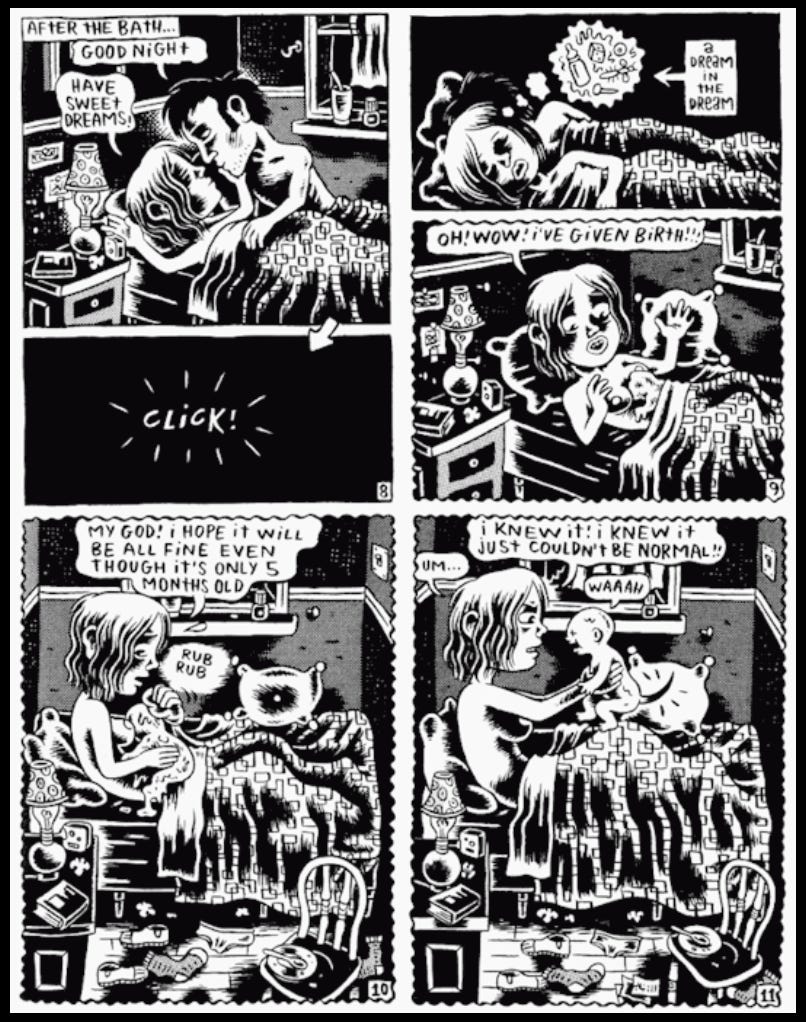It’s been a while since we’ve posted a comics exercise, so we thought we’d share a quick, fun poetry comics exercise we do with our students. We like this exercise because it teaches everyone a new book or zine fold (the “snake book” accordion fold) and it's good practice in pairing surprising images with text.
Think of the last trip you took (maybe spring break, maybe even a visit to the zoo/hardware store over the weekend) and write down six things that happened during that voyage.
Think of a powerful dream you’ve had recently and jot down six images from that dream.
Now, to build the snake book you will need a piece of loose paper. Plain printer paper is fine.
Take the paper in portrait orientation, and fold it in half. Open it and fold the edges in to meet the center fold. This should give you four equal columns.
Unfold it. In landscape orientation, fold the paper into thirds. (You may want to measure this, but it’s okay to wing it–this is a rough draft after all!)
Unfold it and you will see you have twelve squares. Place it in landscape orientation again. On the crease separating the top and middle rows, start on the left and cut along the bottom of the first three squares. Don’t cut the row all the way!
Now on the crease along the bottom and middle rows, start from the right and cut along the first three squares. Don’t cut the row all the way!
You should have what looks like a blocky “z.”
Starting at the bottom, rightmost square (this will be your cover), start to fold your book into an accordion. You may need to adjust some of the “peaks and valleys” of the folds you made and crease them so they bend the right direction. When you fold to the next row, the fold will be along the top, making an upside down “v,” then it will continue along the sides until you fold onto the next row, where it will be along the bottom, making a “v.” These will help your book stand open once you are ready to display it! For now, though, gather it closed.
Open to the first spread. On the left page, write down one of the things you did on your trip. On the right page, draw one of the images from your dream. Continue to alternate writing and drawing throughout the twelve panels, making sure each spread has one thing from your trip and one image from your dream..
When you are done, return to the cover and title your book!
We wanted to highlight some comics artists who use dreams in their work; check them out for inspiration!
Julie Doucet might just be the queen of comic dreams. Since her earliest work, captured in Dirty Plotte, Doucet has depicted surreal, funny, disturbing dreams alongside moments of her everyday life.
Julie Delporte is a French born, now French Canadian, artist whose book This Woman’s Work is a mediation on what it means to be a woman. In it, Delporte includes dreams of bears, children, and more, as she traverses various literal and figurative territory.
Gabrielle Bell lives in Brooklyn, where she documents real life, as seen on her Instagram account @drawings_in_cafes and her dreams. Bell has trod the dream landscape frequently in her books and other works, capturing the absurdity and joy that can happen when we sleep.
If you do this exercise, we’d love to see it! Feel free to tag us online on Instagram @annals_of_autobiographix!









I love this, both the snake-book and the prompt. Thank you for sharing.